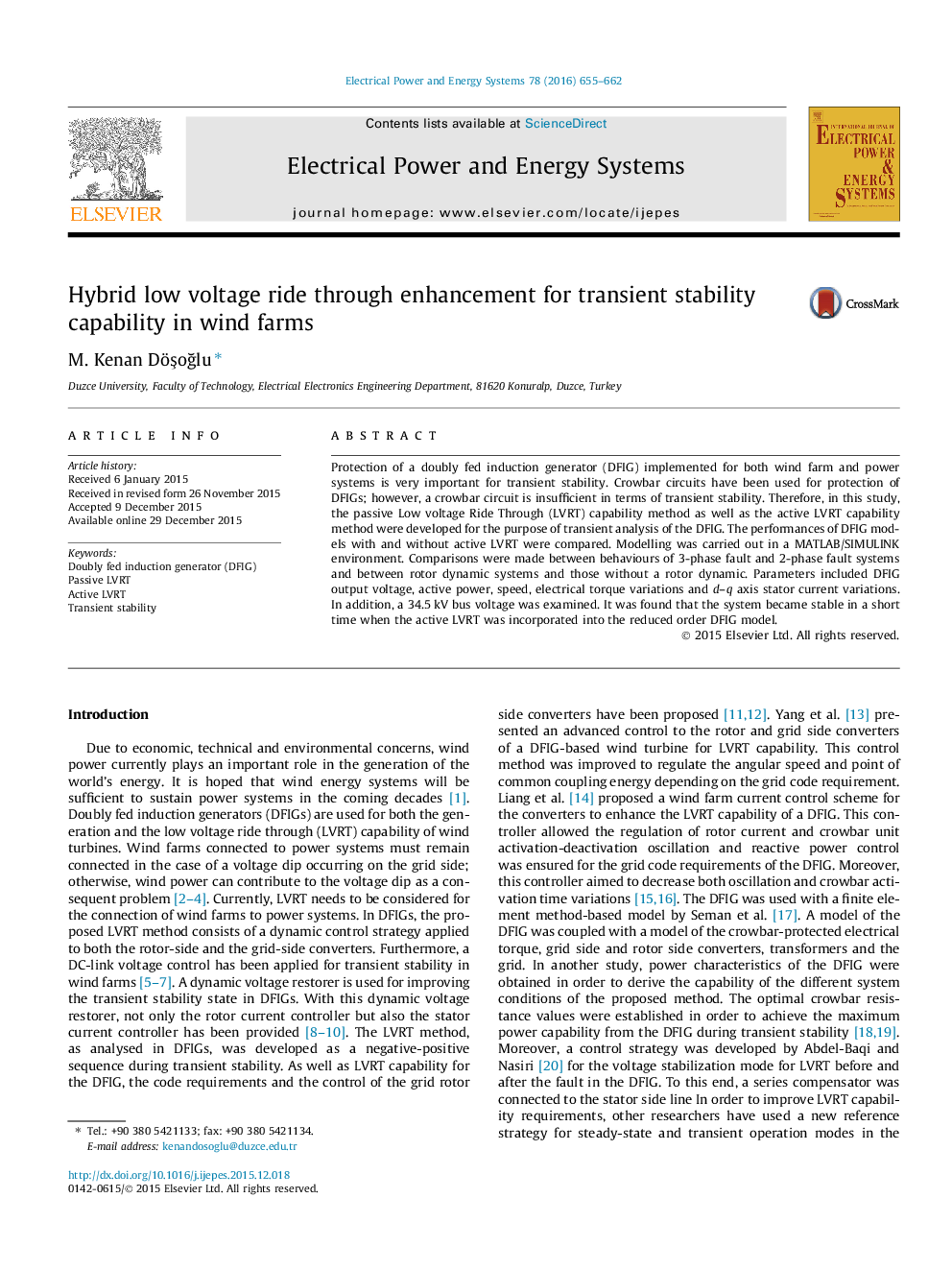| Article ID | Journal | Published Year | Pages | File Type |
|---|---|---|---|---|
| 398469 | International Journal of Electrical Power & Energy Systems | 2016 | 8 Pages |
•A hybrid LVRT capability method was developed in a DFIG.•The aim was to ensure active LVRT capability as well as passive LVRT capability.•Both stator and rotor circuits were modelled based on the voltage source.•A comparison was made of transient events with and without active LVRT capability.
Protection of a doubly fed induction generator (DFIG) implemented for both wind farm and power systems is very important for transient stability. Crowbar circuits have been used for protection of DFIGs; however, a crowbar circuit is insufficient in terms of transient stability. Therefore, in this study, the passive Low voltage Ride Through (LVRT) capability method as well as the active LVRT capability method were developed for the purpose of transient analysis of the DFIG. The performances of DFIG models with and without active LVRT were compared. Modelling was carried out in a MATLAB/SIMULINK environment. Comparisons were made between behaviours of 3-phase fault and 2-phase fault systems and between rotor dynamic systems and those without a rotor dynamic. Parameters included DFIG output voltage, active power, speed, electrical torque variations and d–q axis stator current variations. In addition, a 34.5 kV bus voltage was examined. It was found that the system became stable in a short time when the active LVRT was incorporated into the reduced order DFIG model.
